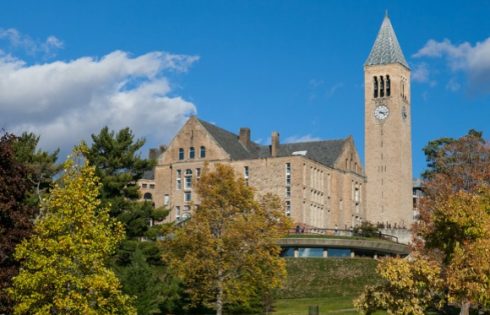
The ‘Murray model’ has been significantly altered numerous times since it debuted
As the coronavirus outbreak continues to take its deadly toll on the U.S. population, experts have made horrific predictions about the number of Americans expected to die from the virus. Yet as the pandemic has worn on, those predictions have in many cases continued to shift—- primarily downward.
This is especially the case for the model developed by Christopher Murray, a public health researcher at the University of Washington, under the auspices of the school’s Institute for Health Metrics and Evaluation.
The “Murray model,” as it has come to be known, has been a mainstay of the U.S. outbreak since nearly its beginning. The scientists who designed it made alarming projections about the expected death toll here, projecting the possibility of as many as 160,000 deaths by August as well as the possibility of nearly half a million hospitalizations by the middle of April.
Notably, the authors of the model assumed that “social distancing” rules would remain in place during this time, suggesting the United States might see society-wide catastrophe from the disease even with significant mitigatory efforts.
Those predictions have changed significantly, with Murray and his co-researchers having made major revisions to the model over the past several weeks. At the beginning of the month they revised the number of projected deaths downward by more than a third. Revisions for individual states were even sharper: In Texas the number of projected deaths went from around 6,000 to less than 1,000, while the model recently reduced the number of expected deaths in Florida by 70 percent.
Modelers, other scholars don’t want to discuss it
A surprising number of epidemiologists, including some of those who have helped develop the Murray model, did not want to discuss the model’s multiple revisions and overshot predictions.
The College Fix reached out to Murray himself multiple times for comment, but he did not respond to multiple email queries.
Elizabeth Halloran, an epidemiology professor at the University of Washington, declined to speak about the model, telling The Fix: “I would prefer not to comment.” Heidi Brown, also a professor of epidemiology at the University of Arizona, said she did “not have time to respond” to queries via phone and email.
Reached via email, Albert Hofman, chair of Harvard’s epidemiology department, referred The Fix to Chan School of Public Health spokeswoman Nicole Rura. Rura told The Fix in an email and over the phone that she attempted to find a professor willing to discuss the model, but she was “completely inundated” with requests and was unable to do so.
The Fix also reached out to Francis Cook at Harvard, Elizabeth Chrischilles at the University of Iowa, Zhao Chen of the University of Arizona, Tanita Woodson Adu at Johns Hopkins University, and Steve Goodman at Stanford, all of them scholars of epidemiology. None responded to multiple requests for comment on the model.
Revised forecasts have been ‘within the same range’
As of April 22, the most recent update of the model, 67,641 deaths are predicted by August. According to the most recent update from Johns Hopkins University’s COVID19 map, there are nearly one million confirmed COVID-19 cases in the United States. About 106,000 have recovered and around 54,000 have died. The United States has performed nearly 5.5 million tests. Data indicate that the rates may be slowing.
In an interview with CBS on April 12, Murray defended his projections when asked about the criticism he received for his high numbers.
“About two weeks ago, our first prediction was about 80,000 cases with a very wide range from about 30,000 to 150,000. And all of our subsequent forecasts have been within that range. What the advantage of the model that we run, which is we keep updating it, you know, three, four times a week, is that it’s driven by the data. And so the trend up in some states has been faster,” he said.
“In New York, for example, at the beginning, that pushed our forecasts up. And then the peaks that we’re seeing in California and Washington have been lower than expected. And that’s brought these forecasts down a bit. But they’ve all been within the same range. The last series of forecasts have been around 61,000 deaths. We predicted the peak about now and that seems to be occurring at the national level.”
MORE: Epidemiologists say widely cited UW coronavirus model is unreliable
MORE: University’s influential COVID model wildly overestimates hospital rate
IMAGE: chrisdorney / Shutterstock.com
Like The College Fix on Facebook / Follow us on Twitter





Please join the conversation about our stories on Facebook, Twitter, Instagram, Reddit, MeWe, Rumble, Gab, Minds and Gettr.